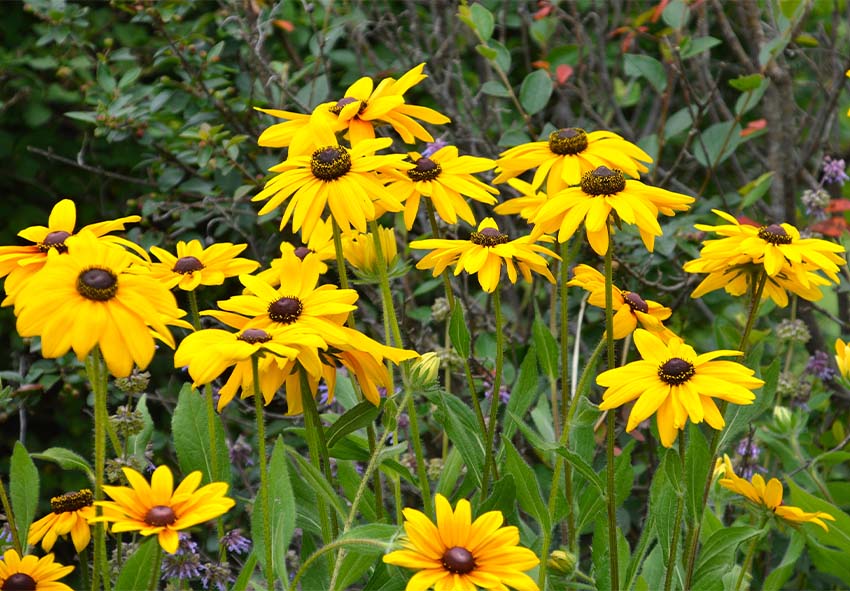Perennials are an invaluable addition to gardens, offering year-round structure, beauty, and support for local wildlife. These plants return each year, helping create a sustainable garden environment with minimal replanting. This guide explores top perennial groups that not only beautify your garden but also contribute to a thriving ecosystem. We’ll look at perennials that attract wildlife, support pollinators, offer low maintenance, repel pests, and suit naturalized or meadow-style garden settings. Our gardening blog is a perfect place to find all the information you need!
Wildlife-Friendly Perennials
Wildlife-friendly perennials provide essential food and shelter for birds, beneficial insects, and small animals. These plants are often native species, perfectly adapted to local ecosystems, making them ideal for sustainable gardening.
Wildlife-friendly perennials like Echinacea and Rudbeckia are hardy and easy to grow, requiring minimal upkeep once established. They bring vibrant colors and textures to the garden while providing essential resources to wildlife. Many wildlife-friendly perennials offer year-round interest, from beautiful summer blooms to seed heads in the fall that attract birds. Their structure and color variations ensure your garden remains visually engaging through multiple seasons.
Best Choice for You
When it comes to supporting local wildlife, these hardy plants provide food, shelter, and year-round interest, creating a haven for wildlife right in your garden. Here are some top picks for you:
- Echinacea (Coneflower)
Known for its tall, daisy-like blooms in shades of pink and purple, Echinacea’s seed heads attract birds like finches in fall. Echinacea is easy to grow in full sun, drought-tolerant, and thrives in well-drained soil. Ideal for supporting native wildlife, Echinacea adds color and structure, benefiting both birds and beneficial insects.
- Rudbeckia (Black-Eyed Susan)
These cheerful, yellow flowers with dark centers create a bright focal point, while their seeds are a food source for birds. Rudbeckia prefers full sun and requires minimal watering once established. Adds striking color and draws in both birds and pollinators, enhancing biodiversity in your garden.
Pollinator-Friendly Perennials
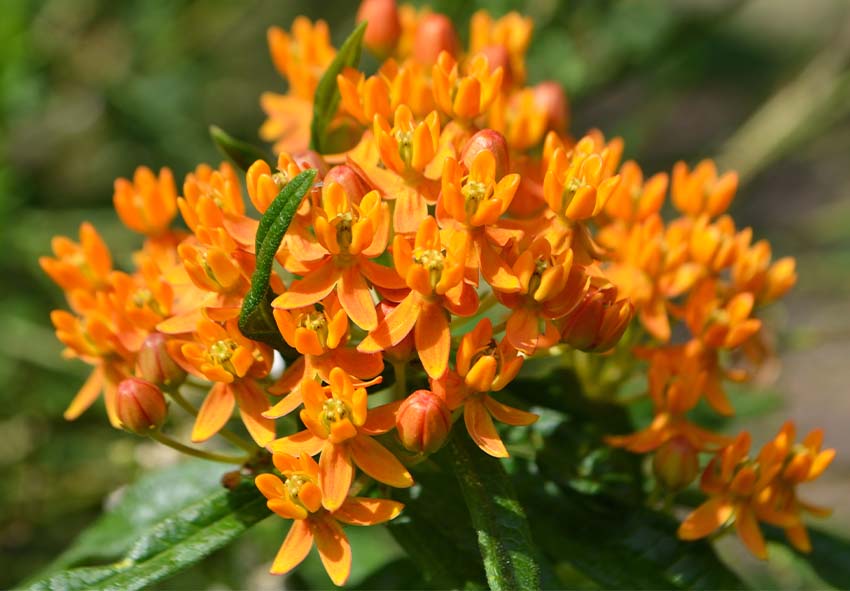
Pollinator-friendly perennials are crucial for creating a garden buzzing with bees, butterflies, and hummingbirds. Plants like Milkweed and Nepeta provide nectar and habitat, ensuring pollinators are well-supported.
Pollinator plants contribute to the health of the ecosystem, supporting essential pollination processes. By including these plants, you’re fostering biodiversity and aiding local food sources for pollinators. With their vibrant blooms and fragrant foliage, pollinator-friendly perennials add an aesthetic and sensory dimension to your garden, creating a lively and welcoming environment.
Best Choice for You
These perennials are known for their nectar-rich blooms, vibrant colors, and appeal to pollinators of all kinds, ensuring your garden is alive with activity and biodiversity. Here are some top picks for your garden.
- Asclepias (Milkweed)
Milkweed’s star-shaped flowers in orange, pink, or white are vital for monarch butterflies, serving as a larval host and nectar source. Thrives in full sun with moderate watering needs. Perfect for butterfly gardens and pollinator pathways, supporting monarch conservation efforts.
- Nepeta (Catmint)
Nepeta has aromatic, grey-green foliage with lavender-blue flowers that bees and butterflies find irresistible. This low-maintenance plant needs little water and prefers full sun with well-drained soil. Works well along borders and pathways, bringing in pollinators while offering a lovely fragrance and soft blue color to your garden design.
Low-Maintenance Perennials
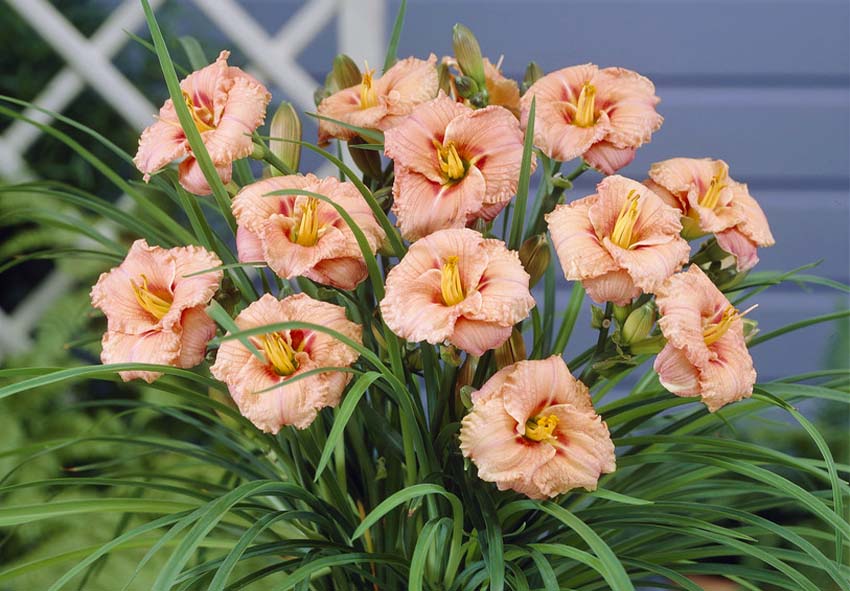
These perennials thrive with minimal attention, making them perfect for gardeners seeking beautiful, resilient plants that don’t require intensive upkeep. Varieties like Sedum and Heuchera are particularly hardy and adaptable.
Low-maintenance perennials are often drought-tolerant, thriving in less-than-ideal conditions. This resilience makes them suitable for various soil types and light conditions, ensuring they flourish in diverse environments. Many low-maintenance perennials have long blooming periods or year-round foliage, bringing lasting color and texture to the garden without constant care or replacement.
Best Choice for You
These resilient plants require minimal care once established, bringing vibrant color and structure to the garden without needing constant attention. Here are some top picks for easy-care perennials that thrive in various conditions:
- Sedum (Stonecrop)
With succulent leaves and clusters of starry flowers in pink, yellow, or white, Sedum is both hardy and beautiful. Requires little watering, tolerates poor soil, and thrives in full to partial sun. Ideal for rock gardens, borders, and xeriscaping, Sedum adds color while requiring very little upkeep.
- Heuchera (Coral Bells)
Known for its colorful foliage ranging from silver to deep purple, Heuchera’s small flowers attract pollinators. Tolerates shade, moderate watering, and does well in a variety of soils. Perfect for shaded areas, Heuchera provides year-round foliage color with minimal maintenance.
Pest-Repellent Perennials
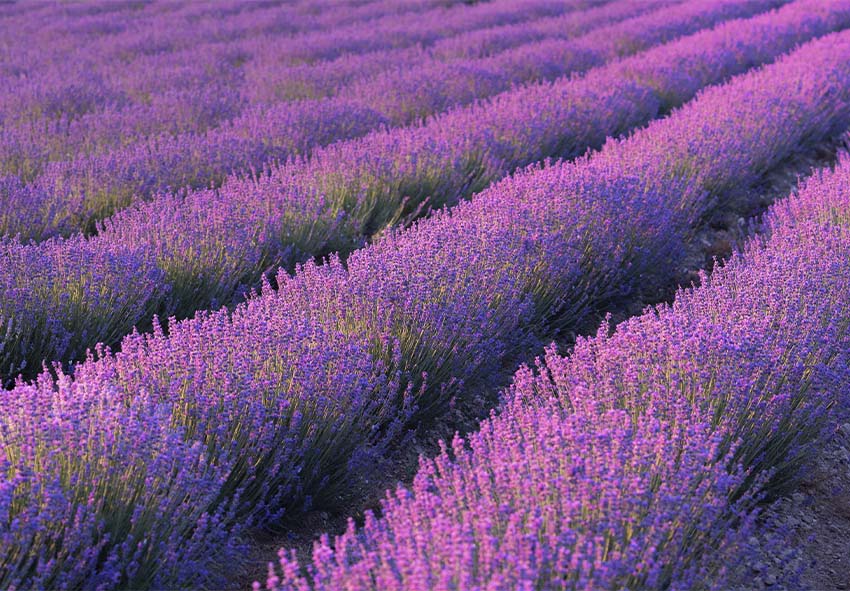
Plants like Lavender and Bee Balm release fragrances or have properties that deter common garden pests, creating a natural line of defense. These pest-repellent plants can reduce the need for chemical interventions. While deterring pests, many of these plants also attract beneficial insects like ladybugs and predatory wasps, which help control garden pests organically.
Pest-repellent perennials offer both practical and visual appeal. Their fragrant flowers and vibrant colors add beauty to your garden while keeping unwanted pests at bay, enhancing the overall garden experience.
Best Choice for You
If you’re looking to reduce pest pressure naturally, certain perennials are effective in deterring unwanted insects. These pest-repellent plants release aromas or contain properties that discourage pests while enhancing the garden’s appeal. Discover some of the best perennials for keeping your garden pest-free:
- Lavandula (Lavender)
Lavender’s aromatic leaves and purple blooms repel mosquitoes and moths, while attracting pollinators. Prefers well-drained soil and full sun, with low water requirements. Use lavender as a fragrant border plant to keep pests away while adding elegance to your garden.
- Thymus (Thyme)
Thyme is a versatile herb with fragrant foliage that helps repel cabbage worms, whiteflies, and other common garden pests. It thrives in full sun, prefers well-drained soil, and requires minimal water once established. Thyme is a great choice for edging or as a groundcover in rock gardens and xeriscapes, and it also supports pollinators with its small, nectar-rich flowers.
Perennials for Naturalized Meadow or Prairie-Style Gardens
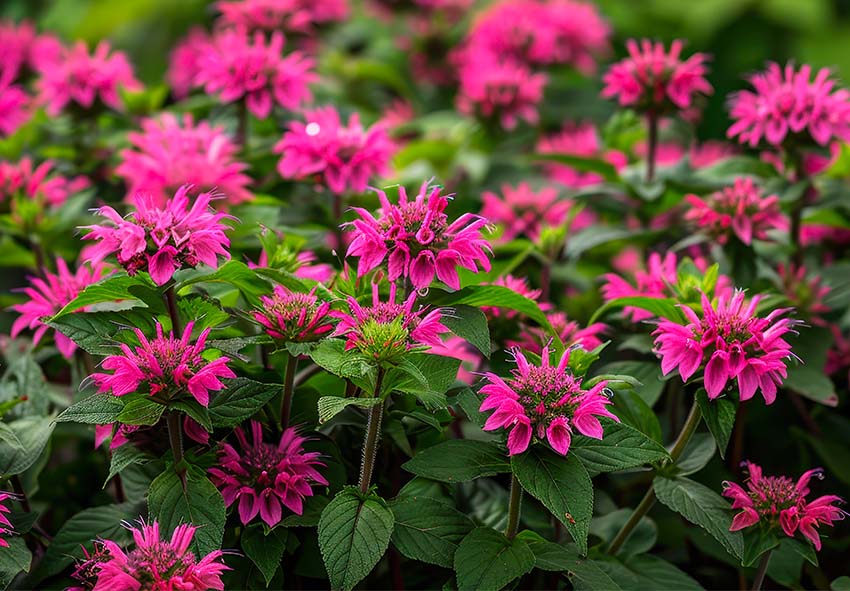
Perennials like Yarrow and Sea Holly blend seamlessly into meadow or prairie-style gardens, contributing to a relaxed, natural look. These plants thrive in wild, open spaces and add an informal charm. Naturalized perennials offer habitat and food for various pollinators and wildlife, making them ideal for creating eco-friendly garden spaces that mimic natural landscapes.
These perennials are resilient and require minimal care, thriving in varied soil conditions and often tolerating drought. Their self-sustaining nature makes them ideal for gardeners seeking a hands-off approach with maximum ecological impact.
Best Choice for You
These plants bring a sense of wild beauty and low-maintenance charm to your landscape, thriving with little care and supporting native wildlife. Here are top perennial choices for a stunning, naturalized garden design:
- Monarda (Bee Balm)
Bee Balm is a vibrant, aromatic perennial with striking, tubular flowers in shades of red, pink, and purple. It thrives in full to partial sun and prefers moist, well-drained soil. Known for attracting bees, butterflies, and hummingbirds, Bee Balm is perfect for pollinator gardens and adds a splash of color and fragrance, as well as a natural, wildflower-like aesthetic to meadow or cottage-style gardens.
- Achillea (Yarrow)
Achillea’s flat, clustered flowers in yellow, pink, and white blend well in meadow settings, attracting pollinators. Thrives in full sun with low water needs, making it perfect for dry, open areas. Ideal for naturalized areas, Achillea brings a wild, untamed charm while supporting bees and butterflies.
Conclusion
Incorporating a variety of perennials into your garden can enhance its beauty, support biodiversity, and create a sustainable, low-maintenance space. Whether you’re looking to attract wildlife, support pollinators, reduce pests, or enjoy a naturalized landscape, there’s a perennial that can meet your needs. You can also find the best perennials for spring planting on our blog. Explore our selection of high-quality perennials to start creating your dream garden today!
Frequently Asked Questions (FAQs) about Perennials for Garden Ecosystem
1. What types of perennials are best for attracting wildlife to my garden?
Wildlife-friendly perennials, such as Echinacea (Coneflower) and Rudbeckia (Black-Eyed Susan), are ideal for attracting birds, bees, and butterflies. These plants provide essential food, nectar, and shelter, creating a biodiverse garden that supports native wildlife while adding beauty to your landscape.
2. Which perennials require the least maintenance?
Low-maintenance perennials, such as Sedum (Stonecrop) and Coreopsis, are excellent choices for an easy-care garden. These resilient plants thrive in various conditions and need minimal watering and pruning once established. They provide long-lasting color and structure with little effort, perfect for busy or beginner gardeners.
3. How do pest-repellent perennials benefit my garden?
Pest-repellent perennials, like Lavender and Catmint, help deter unwanted insects while enhancing garden aesthetics. These plants release aromas or contain compounds that naturally repel pests, reducing the need for chemical sprays and keeping nearby plants healthier. They’re a great eco-friendly choice for a balanced, thriving garden.
4. Can I order perennials for my garden in your store?
Yes, you can order a wide variety of perennials in our online store Dutch-bulbs.com! We offer a carefully curated selection suited for various garden needs, including pollinator-friendly plants, drought-tolerant varieties, and perennials for shaded or sunny areas. Our product listings provide detailed care instructions, ensuring you select the right perennials to thrive in your garden environment.
5. Can I use perennials in a meadow or prairie-style garden?
Yes, naturalized perennials like Black-Eyed Susan and Switchgrass are excellent for creating a meadow or prairie look. These plants mimic the beauty of wild landscapes, require little maintenance, and support local wildlife. They add texture, movement, and seasonal interest to your garden, making it both beautiful and ecologically beneficial.
Published: 07.11.2024

